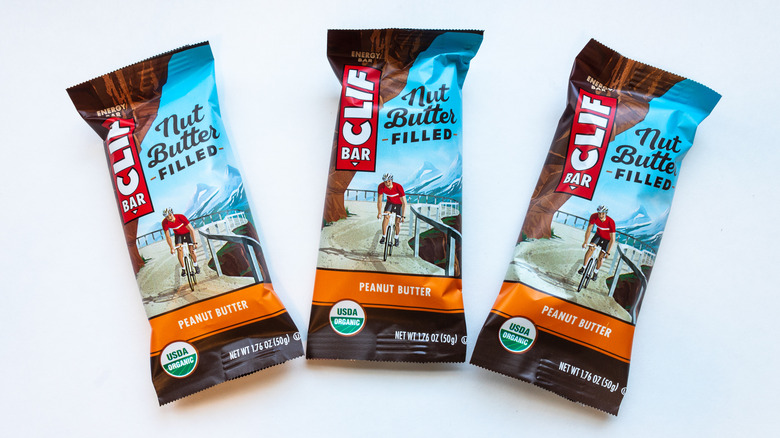Are Clif Bars Actually Healthy?
It's no secret that Clif is making great strides with their all-organic energy bars. If you're athletic, you've probably tried them. For the savvy shopper, you may have noticed them near the granola. But what do they do? Who are these bars for? We have the answers here.
Clif is their name and energy is their game. They are dubbed as the healthy, grab-and-go boosters for strenuous workouts, long rides, and highest hikes. But since these bars are available non-exclusively, nutritionists and dietitians have challenged all the talk surrounding them. Dietary decisions often require sifting through tons of convincing info to find the facts. Let's start debunking these myths.
According to their website, "Clif Bar was born on a bike and built with athletes in mind." You read that right. These nutrition bars were created for "performance energy" to power through a sweaty workout session or to replenish afterwards. No judgement here, but if a short workout leaves you breathless, opt for some fruit and a protein shake instead. These bars help athletes recover after burning plenty of calories. Clif wisely affirms "Different activities demand different nutrition," hence, the wide variety of bars to choose from; including Luna bars and Clif bars for active kids.
The myths about Clif
Because brown rice syrup is the first mentioned ingredient, Spoon University echoes the unease with Clif's high sugar content. To fairly compare: a Snickers has 20 grams of sugar, while Clif bars can have upwards of that amount, depending on the bar (via Medical News Today). However, Clif bars were sculpted for athletic replenishment, not as a sweet snack. Clif addressed this on their website by writing "Simple carbohydrates, like sugar, are ideal sources because they are quickly absorbed and made immediately available to muscles, thereby fueling the body and helping enhance performance." Eat This Not That! created a short list of Clif bars with less sugar that nutritionists actually recommend.
If you skipped lunch, you'll need more than an energy bar to sustain you. Danielle Zickl from Bicycling says "Clif Bars shouldn't be treated as a meal replacement either. According to the Office of Disease Prevention and Health Promotion, a healthy meal should include vegetables, whole grains, proteins, and healthy fats." Clif bars will give you strength 'til your next meal, but should not be eaten instead of dinner.
Clif bars are portable and affordable ways to regain energy during or after a workout. Remember that calories translate to energy, and different lifestyles require various caloric counts for optimal health. If you're athletic or extremely active each day, Clif bars can be an occasional energy source. The sugar count in Clif bars is not the best for sedentary snackers. Alternate ways to recover after a workout include eating healthy fats, carbs, and protein as needed.


